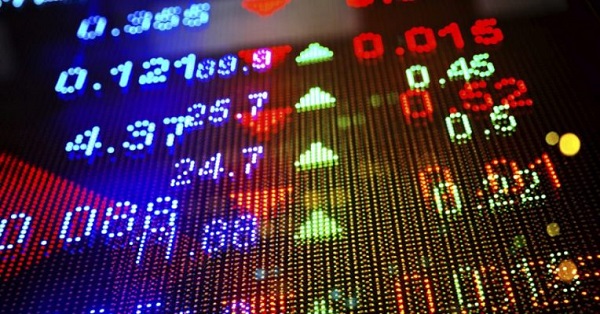Fixed Income:
Expect easing QE measures in 2022

Globally, mixed investor sentiment over the course of the year has seen bond yields rise and fall. In Q1, the reopening of global economies improved activities and spurred positive investor sentiment in bonds. However, the uptick in global COVID-19 cases in the Q2-Q3’21 period, has subdued investor sentiment, causing yields to trend upwards. Our outlook for rates in 2022 depends on stances of key monetary policy authorities. So far, inflationary pressures, from increased consumer spending due to fiscal stimulus injections into the economy, have left policy makers wary. Furthermore, the surfacing of newer, more dangerous COVID variants has dampened global interactions, with countries implementing travel restrictions to affected areas.
At this rate, supply chain challenges are expected to persist and will hinder production levels and supply growth; meanwhile demand is expected to remain strong given earlier mentioned fiscal measures and still increasing global population. With the outlook for inflation still negative, we expect monetary policy makers to react in the next year. As such, we expect a slowdown in QE measures, especially given statements made by major central bankers around the world. Furthermore, investors would posture for higher yields in the markets, given the expected impact of rising inflation on their returns. We expect the increased rates in advanced markets as well as rising inflation rates in emerging markets to trigger investors’ exit from emerging markets. However, we expect a corresponding rate hike in emerging markets in an attempt to lock in foreign deposits.

Increased budget deficit to support rate hike

Locally, yields across the Nigerian fixed income segment climbed in the first half of the year, driven by higher stop rates at the Primary Market Auctions conducted through the Central Bank of Nigeria (CBN). Between January and May, the Debt Management Office (DMO) steadily raised rates at the monthly auctions with the stop rate on the 10-year bond rising 502bps from 7.98% to 13% and overall rates in the bond market soaring 504bps y/y in this time. A much similar pattern was seen in the Tbills segment, where rates have advanced 568bps y/y on average. With the higher y/y rate offerings so far this year, Funds inflow into the equity markets in 2020, have since been lured back to the fixed income market. Nevertheless, activity level at the secondary market has generally been unimpressive, stemming from reduced foreign investor participation. Specifically, whilst turnover at the NTB market has improved 89% y/y, the OMO market – frequented by banks and foreign investors – has seen a reversal in capital by 45% y/y. We believe that the constrained FX supply at the I&E FX window is a significant underlying factor of this phenomenon.
In September, the Federal Government issued $4 billion in Eurobonds and accessed $2.3 billion in SDR allocations. This, in addition to stronger oil prices, has pushed up FX reserves to $41 billion from $35 billion at the start of the year. Despite this increase, daily turnover at the I&E FX window has averaged $124 million, lower than the average for the same period in 2020 ($145 million). However, we note that in the second half, daily average has risen to $163 million, much stronger than last year’s comparable. Despite the outlook for stronger crude prices, operational challenges as well as the OPEC cuts are expected to limit the expected impact on FX balances. As such, we believe that inflows from FPIs would be a focal point in shoring up FX reserves next year. As such, we expect policy makers to incentivize FPI inflows through rate increases targeted at the OMO market in 2022. So far this year, domestic policy makers have taken advantage of the decreasing inflation rate; primary market rates have begun to trend downward slowly, with the yield on the 10-yr bond dropping 25bps to 11.72% in October.
Furthermore, given the maturities expected at the beginning of the year, we see rates declining further in the coming PMAs. However, the level of maturities expected in the middle of the year is relatively small and is likely to reduce investor participation in the markets. On the other hand, the government expects to finance a budget deficit of c.₦6.0 trillion next year to keep up with its slated projects. We believe that these would be mostly financed by the domestic market, given that about $4.0 billion in Eurobonds was issued this year and expected rate increases in international markets may dissuade the FG from seeking external funds. Given that the budget finance sourcing is expected to kick off around the end of Q1, we see rates rising in the NTB and Bonds market as well.
Equity Market
The global economy has undergone radical changes due to the impact of the coronavirus on the socio-economic activities of the world’s population. Nevertheless, the timely stimulus responses from fiscal and monetary authorities were able to jumpstart the global economy following the Great Lockdown of 2020. Additionally, the rebound in economic activities from such policy implementations has raised commodity prices, given a relatively slow supply response. Whilst this has led to higher inflationary pressures globally, it has been quite beneficial to emerging economies, with renewed export income boosting investor confidence in such economies. In Nigeria, the foremost commodity-export by FX earnings, oil revenue has witnessed a 34% surge year-to-date, signaling stronger FX reserves and positively impacting sentiment around the FG’s capacity to honour its debt obligations. For the equity market, this means investors are willing to be less risk-averse in mopping up equities. Still, investments in the equity market – which have seen the NGX ASI gain 7.45% ytd – have been geared towards the Oil and Gas sector, almost with a laser-like focus. For context, whilst the Banking, Consumer Goods, Industrial Goods and Insurance Indices have returned -0.82%, -4.36%%, 6.90% and -2.59% ytd respectively, the Oil and Gas sector has realized an outstanding 60.39% in the same period.
Although the vast gain in oil prices is the major driver of the difference in sectoral returns, several other factors have contributed to underwhelming performance of the other sectors. Specifically, the consumer goods sector remains plagued by a decline in consumer spending power, and although players in the space have used a number of strategies to tide over the impact on revenue, the pass-through effects of these strategies on margins and dividend capacity have limited investor participation in the sector. Meanwhile, for the banks, while weaker non-interest income had kept investors wary until the mid-year, reducing NPLs and the positive year-end outlook for the sector, are now slowly renewing investors’ optimism from a previously riskoff stance. Finally, the industrial goods sector has seen a turnaround in sentiment with the gradual implementation of the FG’s yearly capex plan. Despite the favourable FX balance, investor participation in the equity market has been largely driven by local investors, with the NGX placing average local participation at 78.6% and foreign investor participation at 21.4% for the year. Given the inflationary trend so far, we believe that foreign investor participation has slowed given significant negative real return in the space.
Possible rates hikes in advanced economies pose a risk to emerging markets
Given that rate increases especially in the advanced economies would trigger corresponding rate increases in emerging economies, we see rate hikes across the local fixed income space ensuring strained foreign investor participation in the equity space. Despite this, we see another good year for the oil and gas sector, given our outlook for still strong oil prices. Thus, we expect this to sustain positive sentiment oil-producing stocks. Furthermore, ongoing capex implementation should keep sentiment in the industrial goods sector stable, while expected rate increases could see banks’ interest income rise. Meanwhile, we expect investors to remain wary of the consumer goods sector, given the direct burden of inflationary pressure on margins, and ultimately profit.
2021 conviction stocks outperform NGX ASI
Our conviction stocks have outperformed the NGX ASI, returning 21% so far this year, largely driven by positive sentiment in the oil and gas sector, specifically, SEPLAT and TOTAL, which have gained 73% and 67% ytd respectively, leading the sector to a 54% ytd close. However, WAPCO and JBERGER in the industrial goods sector have also returned 18% and 39% ytd respectively, on the back of improved activity in the cement space, with the sector closing 7% up as the second-best performer in the Nigerian equity market.
VCI West African Equity Index trends higher
The VCI Index, which was launched in September, consists of different stocks selected from the Ghana Stock Exchange (GSE), the Bourse Régionale des Valeurs Mobilières (BRVM), and the Nigerian Stock Exchange (NGX). The index has gained 28% YTD, driven by broad based gains across the respective markets. In Nigeria, Seplat Energy (NGX: SEPLAT) has been the best performer in the Nigerian market, rising 73% YTD, while Okomu Oil (NGX: OKOMU, YTD: +56% YTD), Access Bank (NGX: ACCESS, YTD: +11%), MTN Nigeria (NGX: MTNN, YTD: +12%), and Dangote Cement (NGX: DANGCEM, YTD: +14%), posted strong performances as well. For the BRVM, CFAO Motors (BRVM: CFAC) was the best performer across the VCI, rising 265% YTD, while Societe des Caoutchoucs de Grand Bereby (BRVM: SOGC, YTD: +109%) surged as well. Finally, in Ghana, MTN Ghana (GSE: MTNGH) has soared 103% YTD, with Enterprise Group (GSE: EGL, YTD: +81%) and Standard Chartered Bank (GSE: SCB, YTD: +23%) recording strong performances as well.
Regional review and outlook
In the third quarter of the year, we saw equity returns fall in Kenya, South Africa, and Egypt, while they rose in Nigeria and Ghana respectively. While markets across the region remain in the green YTD, we maintain a conservative outlook on the markets across, given the range of risks and headwinds around economic growth in region.
Inflationary pressures remain uneven across the region
Inflationary pressures across the region remain uneven, as monetary authorities try to balance growth amid rising prices and limited fiscal room. As we enter into 2022, we expect inflation in some countries to slow, while we expect it to rise in others. Starting with Ghana, we are already seeing the rise in petrol and food prices put upward pressure on inflation. Likewise, in Kenya, fiscal measures have led to a rise in prices as well; notably, fuel prices have been adjusted higher. That said, we expect this to remain the case in the coming months, as we expect further fuel price hikes as these governments adjust to the impact of the pandemic on government receipts. We expect this to filter into various sections of the equity market, with investors pricing these factors into their demand for equities in the region and responding in a risk-off manner as they remain cautious of negative returns.
Culled from VETIVA Capital Management Limited’s Nigeria 2022 Outlook
 MMS PLUS NG – Maritime, Aviation, Business, Oil and Gas News Online Newspaper with coverage in Maritime, Oil and Gas, Aviation, Power and Energy as well as Financial News
MMS PLUS NG – Maritime, Aviation, Business, Oil and Gas News Online Newspaper with coverage in Maritime, Oil and Gas, Aviation, Power and Energy as well as Financial News










